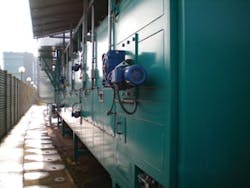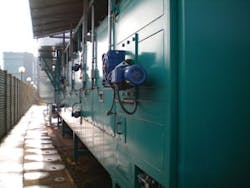Laterals in downtown Catalina Island relined using CIPP technology
• City of Avalon is committed to keeping its' Bay clean through solutions that protect the environment
On Catalina Island, in an effort to preserve fresh water, all wastewater in homes is flushed into the sewer laterals and City mainlines using saltwater. After a video inspection of residential sewer laterals, it was discovered that the use of saltwater for wastewater purposes also has its drawbacks, including corrosion of the laterals. The inspection further revealed that a majority of the laterals were broken or cracked, causing wastewater from the homes in Avalon to enter the groundwater system. "We made the decision to repair virtually every lateral," said Keith Lefevre, Capital Improvements Director, City of Avalon. "In an attempt to not pick and choose and have one fail, we went down entire streets and did the entire Flats area of Avalon which is located directly in front of Avalon Harbor. It was a hard decision to proceed with this project. The State cut off funding, but the City made the decision to move forward. Keeping the Bay clean is important to the City, and we have been working hard for a number of years to accomplish this."
The project, originally titled the "Avalon Bay Water Quality Project," was initially funded by the Clean Beaches Initiative Grant. When funds were frozen due to the State of California economic crisis, the City of Avalon Council voted to allocate additional funds to complete the project.
"CIPP was the chosen method because it is less disruptive to the community," said Mike Jones, Project Manager, United Water. "There is no trenching in the streets, [and] there is less traffic diversion as the process uses a smaller footprint, meaning less problems with disruption of other utilities."
An additional environmental benefit of the MaxLiner system is the use of 100% solids epoxy-based resin. Epoxy resins do not contain styrene or other harmful VOCs. "Prior to this project, the Island [of Catalina] had used styrene to repair one section of the island, but the residents complained about the smell and other issues. So this time, with MaxLiner's epoxy-based resin, these types of resident complaints were avoided," said Chuck Berry, Regional Manager, Roto-Rooter Service & Plumbing Company.
To learn more about MaxLiner, visit www.maxlinerusa.com
July 2009
###

